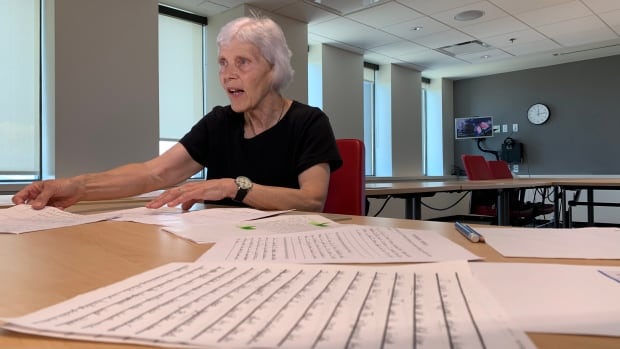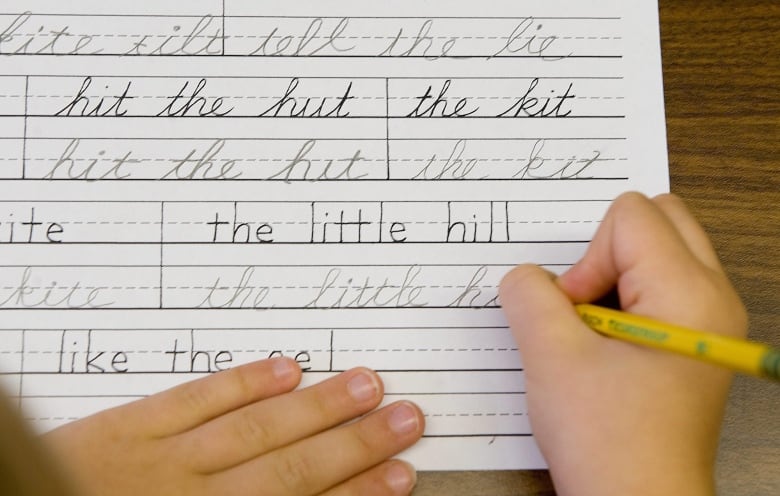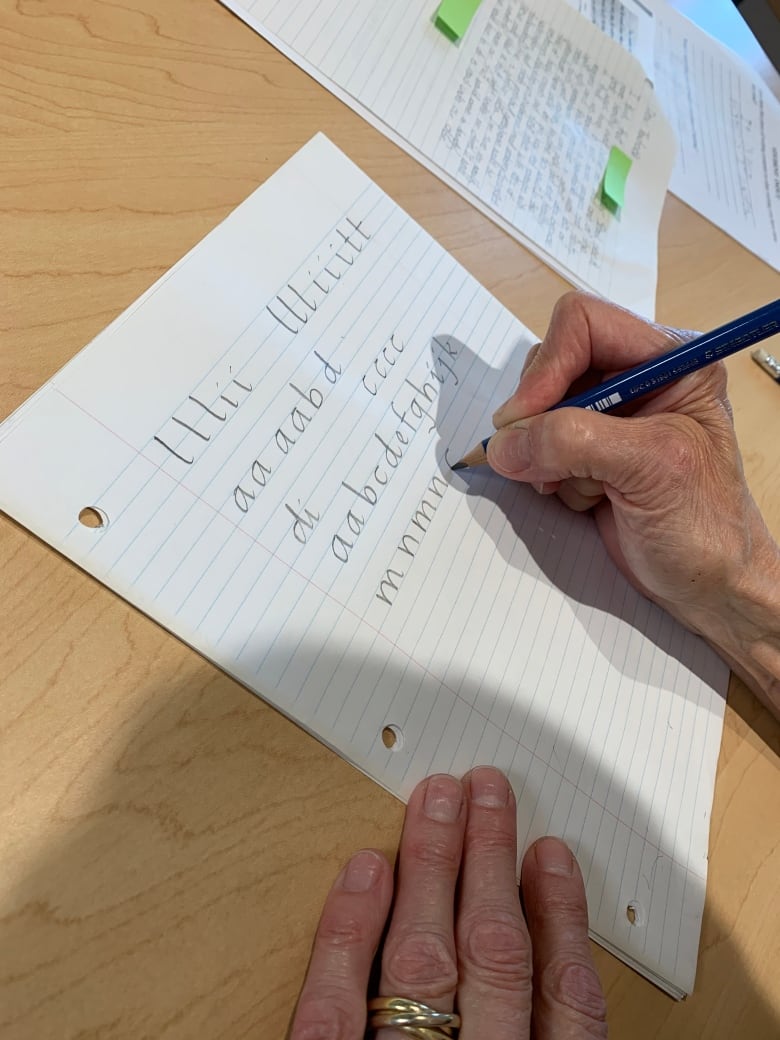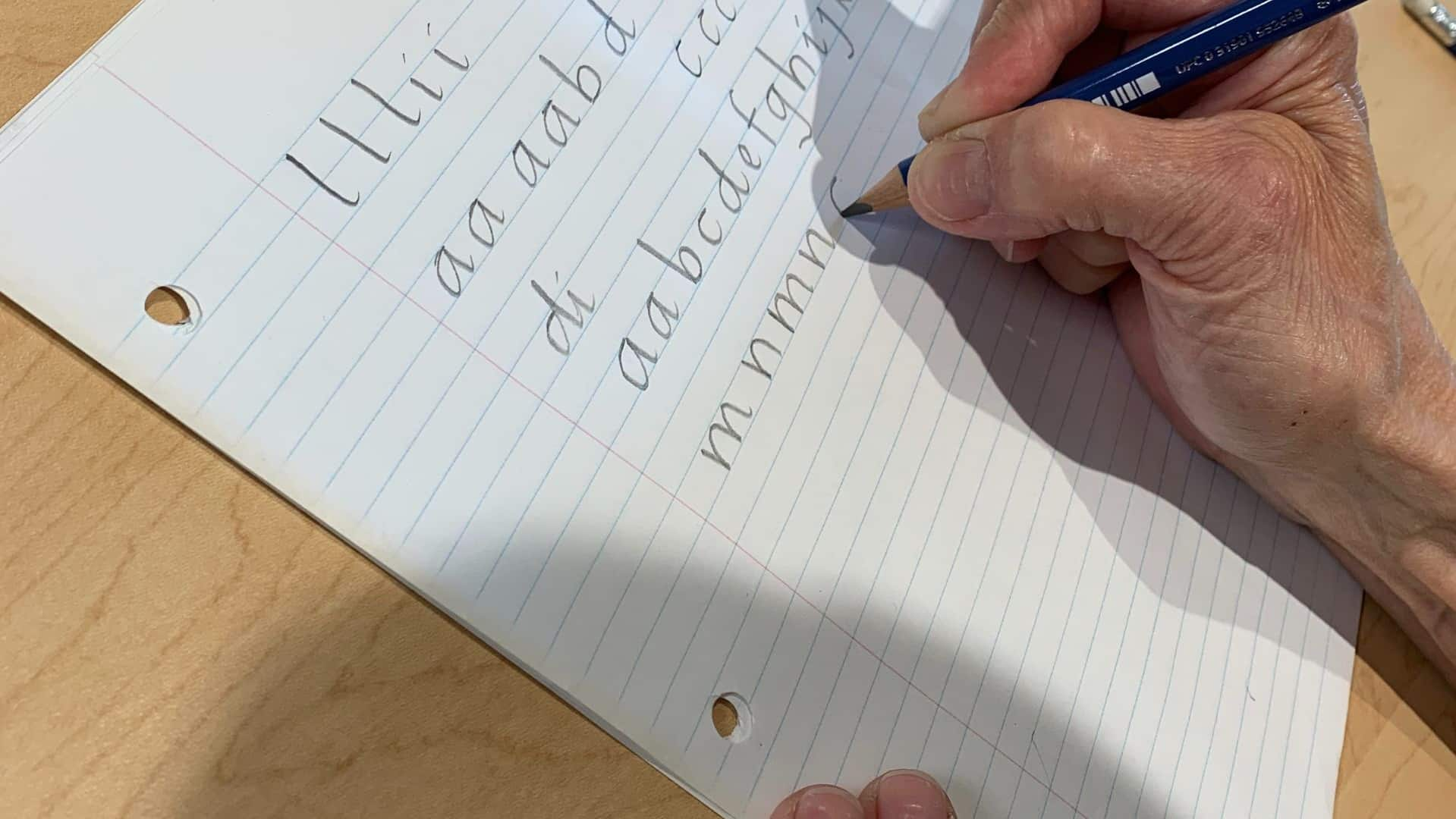
Though many in Ontario have welcomed the reintroduction of cursive to the province’s curriculum, some educators say translating that to the classroom could be easier said than done for a generation of teachers that may have missed out on learning the skill of writing by hand themselves.
While the majority of provinces require students to learn cursive, it isn’t mandatory in some regions. In British Columbia, Newfoundland and Labrador, the Northwest Territories and Yukon, for example, it’s up to teachers to decide whether or not to include it.
Last week, Ontario announced that cursive, which became an optional part of the province’s curriculum in 2006, would once again be compulsory. The new curriculum, set to be in place this fall, incorporates many recommendations from a 2022 Ontario Human Rights Commission report that explored issues faced by public school students with reading disabilities.
Ontario Education Minister Stephen Lecce says the changes were motivated by evidence that called for an emphasis on foundational skills.
“The Ontario Human Rights Commission and so many others have called for us to really be informed by what works, and what clearly works is the return to phonics, the use of cursive writing, the embrace of digital literacy and critical thinking skills,” he said Thursday in an interview with CBC News.

Benefits of cursive
Hetty Roessingh, a professor emeritus of language and literacy at the University of Calgary, sees big benefits on the horizon for students who are taught cursive writing.
“There’s no replacement for engaging the hand brain complex,” Roessingh said, referring to the neural pathways created when people write by hand.
She says it’s a skill that’s undervalued because people don’t understand the contributions it makes to cognition, pointing to note taking as one area where cursive has advantages over a keyboard.
Ottawa Morning8:56Compulsory cursive writing returns to schools
Cursive writing will become mandatory in schools starting this fall – but not everybody’s convinced about its merits.
“People who write fluently and take notes, for example, for an exam, they tend to do better than those who just type their notes,” she said.
“When you’re typing your notes, you’re just transcribing. If you’re hand writing your notes, you’re generating text, and there’s a processing advantage to that.”
Kids can get some of the same benefits from printing, says Lizette Alexander, a Toronto based occupational therapist, but she told Piya Chattopadhyay on Metro Morning earlier this week that it’s not as efficient.
“With printing, letters start kind of all over the place,” she said, noting that some are formed by starting at the bottom, while others start at the top, and sometimes require a backward movement.

“In cursive, it’s forward movement constantly. The letters are connected … there’s basically three strokes that you need to know in order to learn cursive.”
Alexander says that often, kids who are referred to her may not have been diagnosed with any kind of learning disability, but find the work involved with putting pen to paper difficult.
“Every time they’re writing, if they’re not specifically taught letter formation, they’re reinventing the wheel on how to do [the letter] A, and it’s not consistent,” she said. “And then that becomes work.”
Foundational shift in curriculum
Dyslexia Canada executive director Alicia Smith says cursive’s Ontario comeback should be discussed in the context of a larger shift.
“Making cursive a mandatory part of the curriculum is actually part of a much broader focus on bringing back explicit instruction in foundational skills,” she said.
Smith says the previous curriculum did not support the needs of students with dyslexia, who she says require instruction in “explicit foundational skills” to be successful in learning to read.
“It’s beyond the handwriting, but that’s a part of it. They need to have phonics instruction, they need to have instruction in phonemic awareness. They really need to have a lot of practice working at the very small units like working with letters and sounds,” she said.

“The new approach is starting with those small pieces and helping kids learn how to put them together and master those strong pieces, small pieces, so they can build up to the more complex layers of language.”
Smith thinks cursive writing has caught people’s attention among the other changes because it represents a generational gap.
“It’s kind of a pet peeve of my parents’ generation,” she said. “When they write letters to my kids, my kids can’t read them.”
Teachers may lack skills
Roessingh says some elementary school teachers who will be tasked with teaching cursive may not have learned it themselves.
“You can put this on the curriculum, but if teachers are not prepared to teach, if they don’t have good resources to teach, I am afraid this will just fall off the radar again.”
She says cursive tends “to fall by the wayside,” even in provinces where it’s a mandatory curriculum element.
Teresa Rothwell, a teacher in Caledonia, Ont., says she taught cursive in the past when it was optional, but thinks it’s something most teachers didn’t include in their lessons. She says it’s important that teachers be given time to adjust and develop materials for a new curriculum, which includes changes beyond cursive.
“It’s not a go-to manual where you just open it up and it tells you what to do,” she said of the curriculum. “You really need to be familiar with it to do a good job.”
Years after several provinces removed cursive writing from school curriculums, Ontario is making it compulsory again.
Lecce says he’s confident educators will rise to the challenge.
“We’re talking about literacy skills, we’re talking about the ability to communicate confidently, it’s something worth investing in,” he said.
“And if it means we all have to put just a bit more work in over the coming days and weeks to prepare for September, I know [educators] will, because I think they care deeply about the success of young people around those fundamental skills.”
